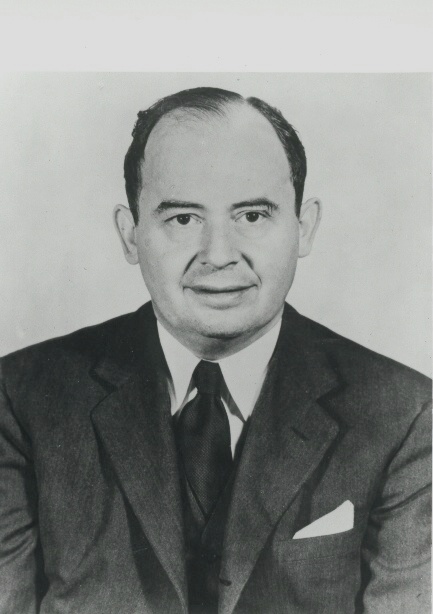John von Neumann
|
John von Neumann John von Neumann (1903 - 1957) In 1945, mathematician John von Neumann undertook a study of computation that demonstrated that a computer could have a simple, fixed structure, yet be able to execute any kind of computation given properly programmed control without the need for hardware modification. Von Neumann contributed a new understanding of how practical fast computers should be organized and built; these ideas, often referred to as the stored-program technique, became fundamental for future generations of high-speed digital computers and were universally adopted. The primary advance was the provision of a special type of machine instruction called conditional control transfer--which permitted the program sequence to be interrupted and reinitiated at any point, similar to the system suggested by Babbage for his analytical engine--and by storing all instruction programs together with data in the same memory unit, so that, when desired, instructions could be arithmetically modified in the same way as data. Thus, data was the same as program. The von Neumann architecture is a design model for a stored-program digital computer that uses a processing unit and a single separate storage structure to hold both instructions and data. It is named after the mathematician and early computer scientist John von Neumann. Such computers implement a universal Turing machine and have a sequential architecture. The terms "von Neumann architecture" and "stored-program computer" are generally used interchangeably. A stored-program digital computer is one that keeps its programmed instructions, as well as its data, in read-write, random access memory (RAM). Stored-program computers were an advancement over the program-controlled computers of the 1940s, such as the Colossus and the ENIAC, which were programmed by setting switches and inserting patch leads to route data and to control signals between various functional units. In the vast majority of modern computers, the same memory is used for both data and program instructions. Historical Timeline for John von Neumann :
|
|










